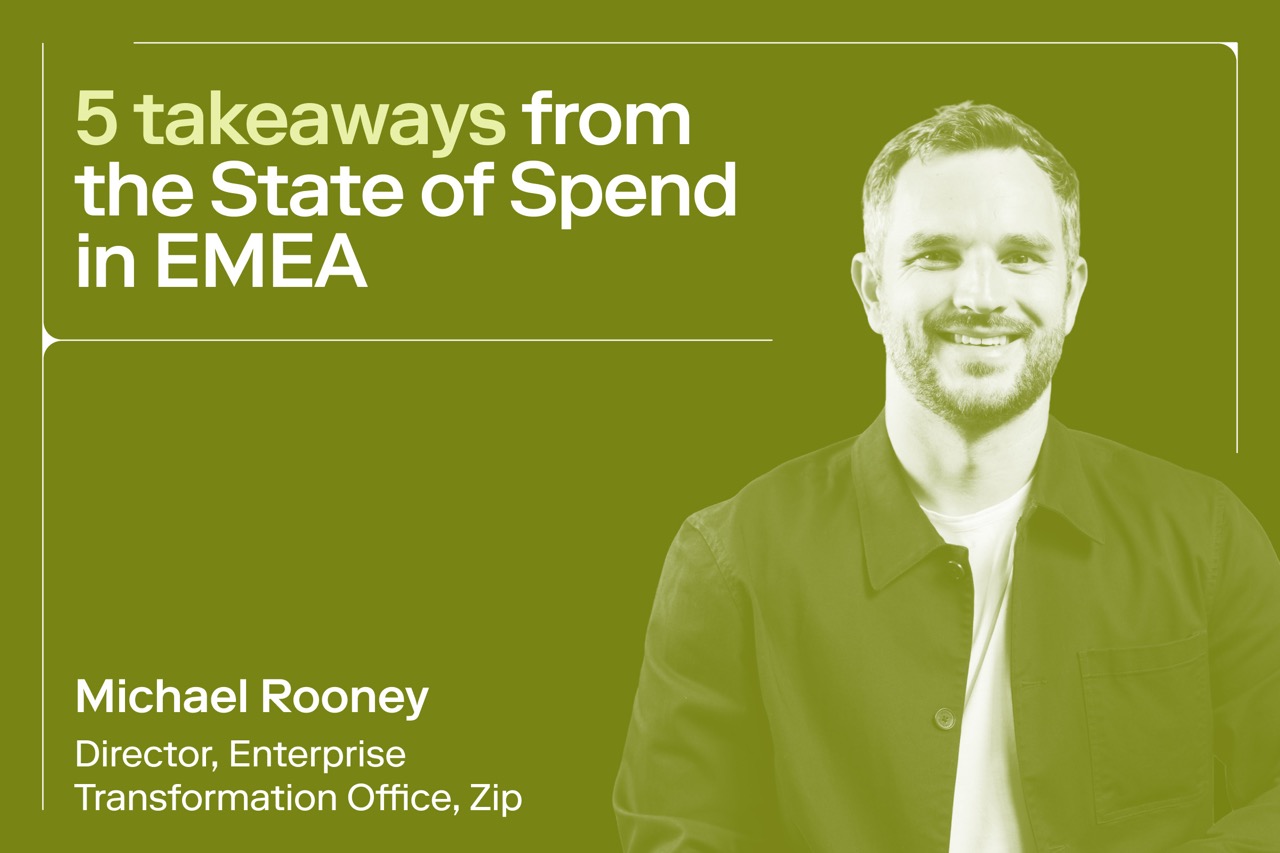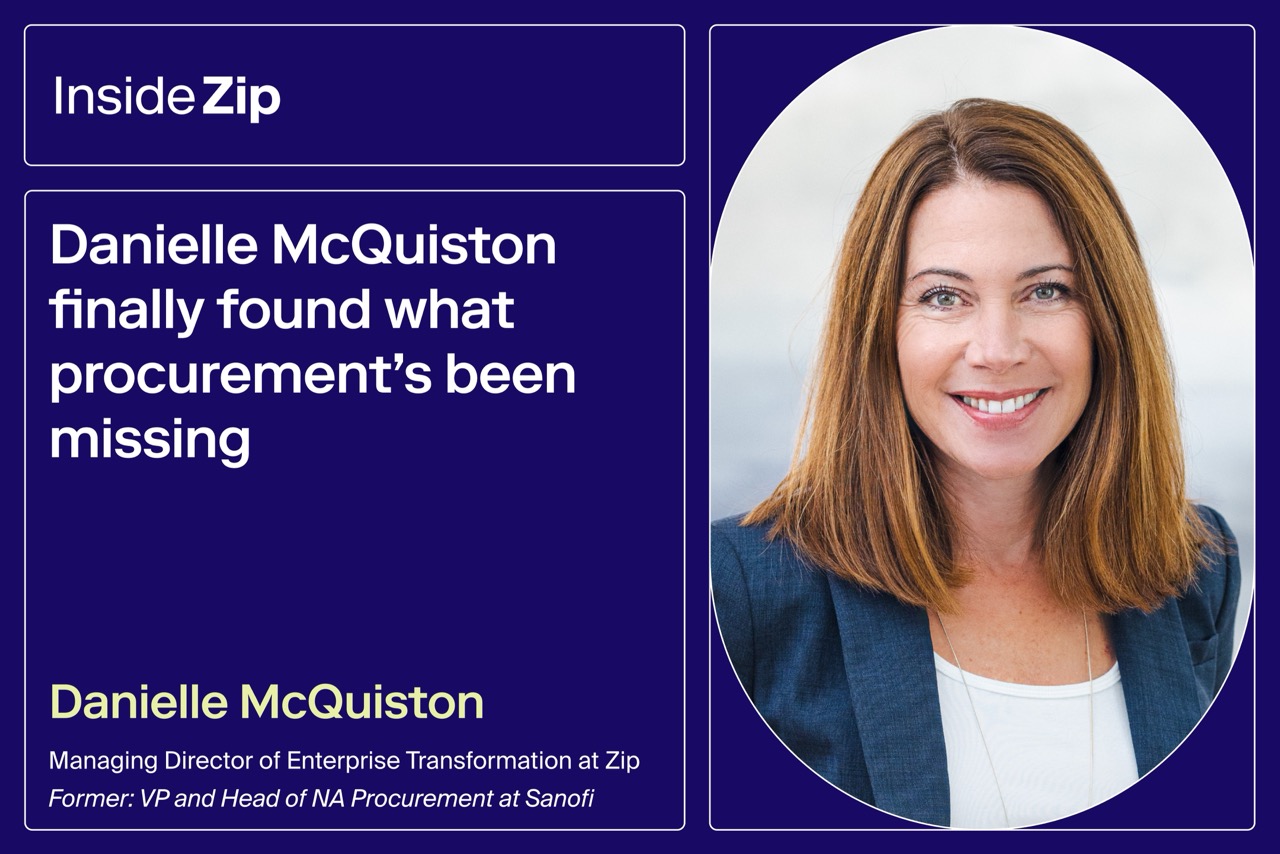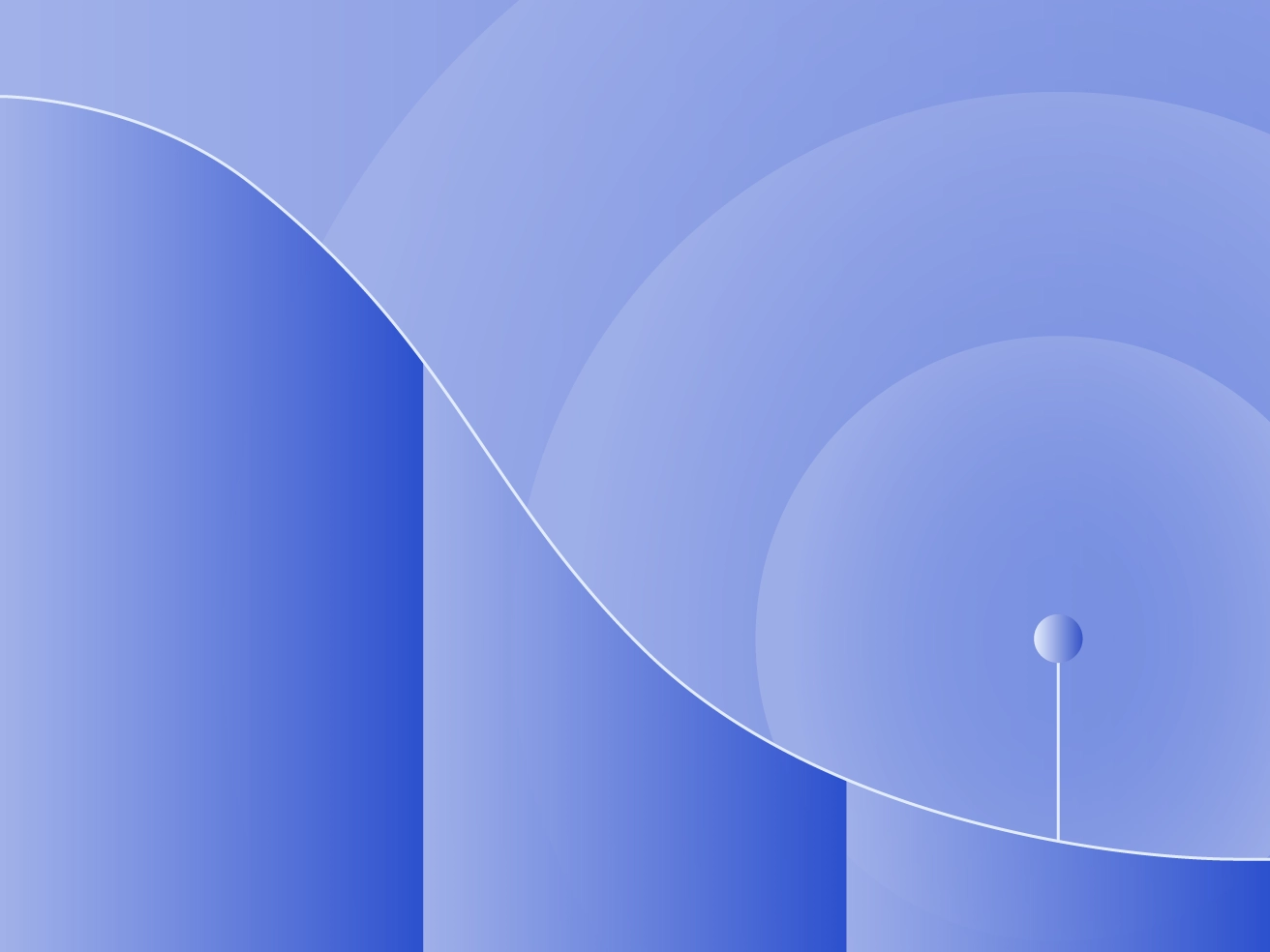
What is procurement orchestration? A complete guide
How to streamline intake, control spend, and automate workflows with agentic AI.

Procurement at many companies often feels like an overly complex black box. When employees face opaque approval cycles and disjointed systems, they often bypass formal channels entirely, leading to unchecked rogue spend and significant compliance risks. Procurement orchestration solves this by simplifying the intake-to-pay experience, replacing the confusion of siloed legacy tools with a unified, intelligent workflow.
In addition, modern orchestration is evolving past simple process mapping. By embedding agentic AI into the orchestration layer, leading organizations are now automating the manual tasks that slow teams down, like verifying vendor data and cross-referencing contracts.
This shift provides financial and procurement leaders with unparalleled visibility and control while empowering employees with a “self-driving” experience. In this guide, we’ll unpack how procurement orchestration works, how agentic AI accelerates its strategic impact, and the signs that your organization is ready for a dedicated platform.
What is procurement orchestration?
Procurement orchestration is the strategic integration of all people, systems, and data involved in an organization’s spending lifecycle. Unlike traditional tools that isolate specific tasks, orchestration creates a holistic “collaboration layer” that sits above your existing tech stack (such as ERPs, CLMs, and GRC tools). It serves as a single front door for all purchase requests, unifying the fragmented tools that cross-functional stakeholders, like Legal, IT, and Security, prefer to use.
In its most advanced form, this approach evolves into agentic procurement orchestration. While standard orchestration routes a request from Point A to Point B, agentic AI actively works on the request as it moves.
For example, AI agents can autonomously review legal documents, flag non-standard terms, or validate supplier tax information in real-time. This allows procurement teams to shift their focus from administrative gatekeeping to high-value strategy, maximizing spend visibility and driving efficiency across the entire business.
The strategic value of procurement orchestration
Implementing a procurement orchestration platform moves the function beyond simple ticket processing to becoming a strategic driver of business efficiency. By unifying people, systems, and data, orchestration transforms the intake-to-procure lifecycle.
Here is how a modern orchestration framework can benefit your company:
- Drive total employee adoption: By providing a “single front door” for all purchase requests, you remove the friction that causes non-compliance. An intuitive intake experience ensures employees actually use the system, giving procurement leaders early visibility into spend before it is committed, rather than after the invoice arrives.
- Accelerate cycle times: Orchestration replaces slow, linear approval chains with parallel approval workflows. Cross-functional teams (Security, Legal, IT) can review requests simultaneously rather than sequentially, drastically reducing the time from intake to PO.
- Automate complex routing: Manual triage is prone to human error. Orchestration platforms use intelligent logic to automatically route requests to the correct cost center owners and technical approvers based on dynamic user hierarchies and request criteria.
- Unify your tech stack: Orchestration does not replace your existing tools; it maximizes them. By seamlessly integrating with your ERP, CLM, GRC, and ITSM systems, the platform ensures that stakeholders can review and approve requests in their preferred environments while data flows automatically between systems.
- Unlock savings with agentic AI: Beyond standard automation, agentic AI actively validates data to prevent errors and leakage.
AI agents can autonomously cross-reference vendor details, flag duplicate software requests, and surface budget insights in real-time, ensuring every dollar spent is accurate, compliant, and strategic.
How does procurement orchestration work?
Think of procurement orchestration as an intelligent "collaboration layer" that sits on top of your existing purchasing tech stack.
Most organizations already utilize a fragmented mix of tools: an ERP (like NetSuite or SAP), a traditional Procure-to-Pay (P2P) system, and best-of-breed solutions for Contract Lifecycle Management (CLM) or Security. While some companies implement simple intake management to create a “start button” for requests, true orchestration goes much further.
Orchestration manages the entire intake-to-pay lifecycle. It connects these disparate systems via API, ensuring they talk to each other in real-time. Instead of relying on linear, manual handoffs, the platform coordinates parallel workflows, allowing Legal, Security, and Finance to approve a request simultaneously rather than sequentially.
The agentic difference: in a modern orchestration platform, agentic AI enhances this mechanism. The system is capable of more than just routing the request, but actively acting upon and processing it.
For example, an AI agent can ingest a vendor’s security certificate from an email, automatically upload it to your GRC tool, and validate the expiration date, all without human intervention. This turns a static process into a dynamic, self-driving workflow that eliminates the bottlenecks common in siloed legacy solutions.
Key components of procurement orchestration
A robust procurement orchestration platform requires more than just a connection between tools; it requires a unified logic layer that governs the entire spend lifecycle. To function effectively, the framework relies on four primary components that bridge the gap between best-of-breed software and the people who use them.
Intelligent, agentic workflows
Manual touchpoints are the primary cause of intake friction. In a research study conducted by Zip, 27% of respondents noted they require 10 or more approvals for a single purchase. This fragmentation drains efficiency and encourages rogue spend.
Modern orchestration overcomes this through agentic workflows. Rather than simply routing a ticket from person to person, the platform uses AI agents to autonomously execute tasks, such as pre-filling intake forms based on past behavior or nudging approvers via Slack or Teams.
This “embedded” experience simplifies the process, guiding employees effortlessly through complex compliance requirements without them needing to understand the underlying logic.
Unified supplier management and portals
Procurement is fundamentally a relationship-based function. Orchestration consolidates scattered supplier data, contracts, tax documents, risk scores, and spend history into a single source of truth.
Instead of chasing vendors via email, orchestration platforms provide a dedicated supplier portal. Vendors can autonomously upload tax IDs, security certificates, and payment details.
This self-service model feeds directly into the orchestration layer, allowing Finance, Legal, and Security teams to review validated data within their preferred tools (like ERPs or GRC systems) without manual data entry.
Integrated Contract Lifecycle Management (CLM)
In a traditional waterfall process, Legal is often brought in too late, creating bottlenecks. Orchestration pulls Legal upstream, integrating compliance checks directly into the intake workflow.
By coordinating parallel approval paths, the platform ensures Legal can review terms simultaneously with IT and Security. Advanced orchestration leverages AI to parse contracts during intake, automatically extracting key metadata and flagging non-standard terms. This ensures that by the time a contract reaches the final sign-off, the majority of the risk assessment is already complete.
Process reporting and analytics
You cannot control what you cannot see. Orchestration unifies data from across the entire tech stack to provide real-time visibility into every dollar requested, committed, or spent.
Beyond basic reporting, AI-powered spend intelligence proactively identifies inefficiencies. The system can detect duplicate vendor requests across different departments, flag price variances against benchmarks, and surface consolidation opportunities.
This shifts procurement from a reactive gatekeeper to a proactive strategic partner, using predictive insights to drive measurable business impact.
Signs your organization needs procurement orchestration solution
Is a dedicated orchestration layer right for your business? As organizations grow, legacy P2P tools often fail to provide the flexibility and user experience required to manage complex spend. If your team is facing the following challenges, it is likely time to implement procurement orchestration software:
1. You struggle with fragmented systems and data silos
If you have best-of-breed tools for Legal (CLM), Finance (ERP), and IT, you likely experience "system fragmentation." Data gets trapped in silos, forcing stakeholders to manually copy-paste information between platforms to complete a single purchase.
Procurement orchestration acts as the connective tissue between these disparate tools. It links your tech stack via API, allowing Legal, IT, and Security to review requests within their preferred native systems, while Finance and Procurement leaders gain a centralized view of the entire lifecycle.
2. Your teams waste time chasing information
Have your procurement managers become professional "receipt chasers"? When teams spend hours emailing employees for missing receipts, vendor tax forms, or budget codes, strategic work suffers.
This is where agentic AI transforms the process. Instead of a human digging for data, an AI agent embedded in the orchestration platform proactively handles the legwork. It can message employees on Slack to request missing documentation or autonomously validate vendor data against external databases, ensuring that by the time a human reviews a request, the data package is already complete.
3. Rogue spend and “Shadow IT” are increasing
When the procurement intake process is difficult or opaque, employees will bypass it. "Rogue spend" is rarely an act of malice; it is usually a symptom of bad User Experience (UX). If buying software requires navigating a confusing, clunky interface, employees will use their corporate cards instead, creating compliance risks.
Orchestration solves this by providing a consumer-grade "front door" for intake. When the process is easy, intuitive, and transparent, adoption increases naturally. By removing the friction, you enforce strict financial governance and approval controls without impeding speed, turning potential rogue spend into managed, compliant purchasing.
Take control of your procurement process with Zip
Procurement orchestration transforms a complex, fragmented web of approvals into a unified, strategic engine. By bridging the gap between your people and your technology, Zip makes the intake-to-pay process effortless for everyone involved.
With Zip’s agentic procurement orchestration platform, your procurement function is able to do more than simply respond to tickets, but actually orchestrate value.
Teams can leverage Zip’s purpose-built AI agents to automate data entry, reduce cycle times through parallel approval workflows, and seamlessly integrate with the best-of-breed tools (ERP, CLM, GRC) they already love.
The result? A consumer-grade user experience that requires no training, driving towards 100% employee adoption. When employees love the process, compliance becomes automatic, giving finance and procurement leaders total visibility and control over every dollar spent.
Ready to transform your procurement operations? Request a demo today to see why Zip is the world’s leading solution for intake and agentic procurement orchestration.

Maximize the ROI of your business spend

Enter your business email to keep reading



























.webp)




















.avif)












.avif)










.webp)





.avif)












.avif)
